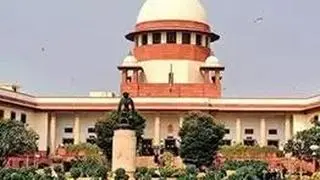Kerala’s Finance Minister K.N. Balagopal will present his second full budget on Friday in a continuing attempt at allocate the finite resources at his command, to defray major expenditures, not least of which are the list of ‘committed’ expenditures,’ a traditional bugbear, which needs to be fully provided for under any circumstance.
This list includes spends on salaries, pensions, and interest. With a bulk of the budget (70 per cent and above) getting allocated to these heads has limited the state’s capacity to spend on productive sectors.
GST regime impact
According to the revised estimates, in 2020-21 the state spent 73 per cent of its revenue on committed expenditure obligations across salaries (30 per cent of revenue receipts), pension (21 per cent), and interest payments (22 per cent).
In 2021-22, the state was estimated to spend seven per cent less or 65 per cent of its revenue receipts under these heads, but one will need to wait for the 2022-23 revised estimates to know whether this has been realised.
According to Balagopal, the GST regime has limited the manoeuvring space to raise resources through taxes. States have given up a significant part of their taxation powers and are compensated only for five years for any shortfall in revenues, against a projected revenue growth target of 14 per cent per annum.
Net tax proceeds
Kerala has sought immediate disbursement of the GST compensation arrears and extension of the compensation shortfall payment for five years from 2022 in view of the economic crisis arising due to the pandemic-induced lockdown.
Also, the 15th Finance Commission has fixed the share of states in the net tax proceeds of the Centre for 2020-21 at 41 per cent. Due to a change in the criteria for horizontal devolution, the net tax proceeds for Kerala stand reduced to 1.94 per cent.
RK Singh, Additional Chief Secretary, Finance, says that phasing out of the GST compensation regime by June this year and the tapering off of the revenue deficit grants under the Finance Commission award will limit the state’s elbowroom unless it ensures ‘ robust economic growth’ post-pandemic.
Own tax revenue
The main sources of the state’s own tax revenue are State Goods and Services Tax, sales tax on petroleum and alcoholic liquor, stamps and registration fees, State excise duties, motor vehicle tax and land revenue.
Balagopal has indicated that he will attempt to rationalise some of these levies, especially land reveue and stamp and registration fees. But he hinted that liquor, already heavily-taxed at among the highest levels in the country, may be spared.
State lotteries is a major source of non-tax revenue, which constitutes 81.32 per cent of the total levy under this head. But critics have lampooned how successive Finance Ministers have failed to think beyond lottery-liquor-petroleum, for raising resources.








Comments
Comments have to be in English, and in full sentences. They cannot be abusive or personal. Please abide by our community guidelines for posting your comments.
We have migrated to a new commenting platform. If you are already a registered user of TheHindu Businessline and logged in, you may continue to engage with our articles. If you do not have an account please register and login to post comments. Users can access their older comments by logging into their accounts on Vuukle.